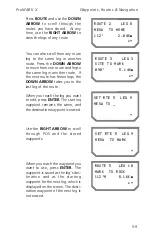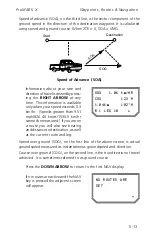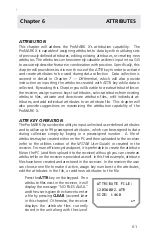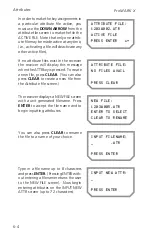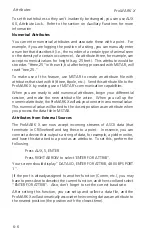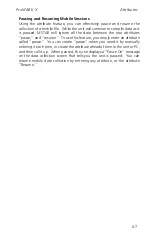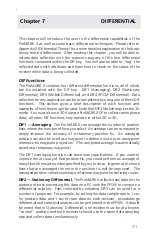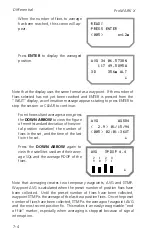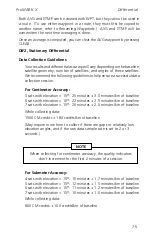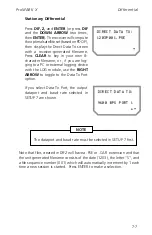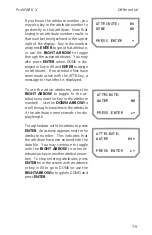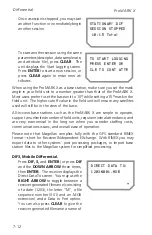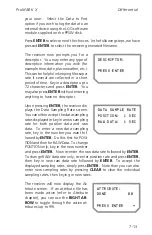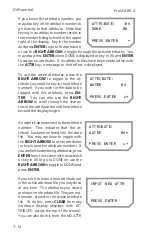
Differential
ProMARK X
7-1
Chapter 7
DIFFERENTIAL
This chapter will introduce the user to the differential capabilities of the
ProMARK X as well as some basic differential techniques. Please refer to
Appendix 2 (Differential Theory) for a more detailed explanation of the basic
theory behind differential. After reading this chapter, you will be able to
initiate data collection with the receiver using any of the four differential
functions contained within the DIF key. You will also be able to “tag” the
collected data with attributes and learn how to check on the status of the
receiver while data is being collected.
DIF Functions
The ProMARK X contains four different differential functions, all of which
can be initiated with the DIF key: DIF1 (Averaging), DIF2 (Stationary
Differential), DIF3 (Mobile Differential), and DIF4 (RTCM Differential). Data
collection for any application can be accomplished by using one of these DIF
functions. This section gives a brief description of each function and
examples of how they might be used. Note that DIF3 Mobile requires the 3D
mode. You must also use 3D if using a ProMARK X CP to collect carrier phase
data; all other DIF functions may operate in either 2D or 3D.
DIF1 — Averaging
. The ProMARK X can average the number of position
fixes where the number of fixes you select. An average can be computed to
simply improve the accuracy of a stationary position fix. An averaged
position can also be used as a waypoint to define a route or as a waypoint
reference for waypoint projection. (The computed average is automatically
saved as a temporary waypoint.)
The DIF1 Averaging function can serve many applications. If you want to
improve the accuracy of that position fix, you could perform an average of
many fixes (the exact number specified by you) to do so. In general, the more
fixes that are averaged the more the position fix will be improved. The
averaged position can also serve as a reference waypoint for defining routes.
DIF2 — Stationary Differential.
The ProMARK X collects (raw) data for the
purpose of post-processing this data on a PC with the PPSW to compute a
differential solution. Files collected by initiating DIF2 can be used for a
number of purposes. For example, by setting the data sample rate to 1 sec
for position data and 1 sec for raw data on each receiver, pseudorange
differential and statistical analysis can be performed in the PPSW. It should
be noted that in Stationary Differential, one receiver must be at a known
“control” position and both receivers should use the same data sampling
rate and collect data simultaneously.
Summary of Contents for GPS PROMARK X
Page 4: ......
Page 10: ...vi...
Page 14: ...Introduction ProMARK X 1 4...
Page 92: ...Attributes ProMARK X 6 8...
Page 188: ......

